In 'Star Trek: Discovery' Season 4, Episode 2, the Federation learns the gravity of the situation
The story is mostly awful, but the acting is mostly exceptional.
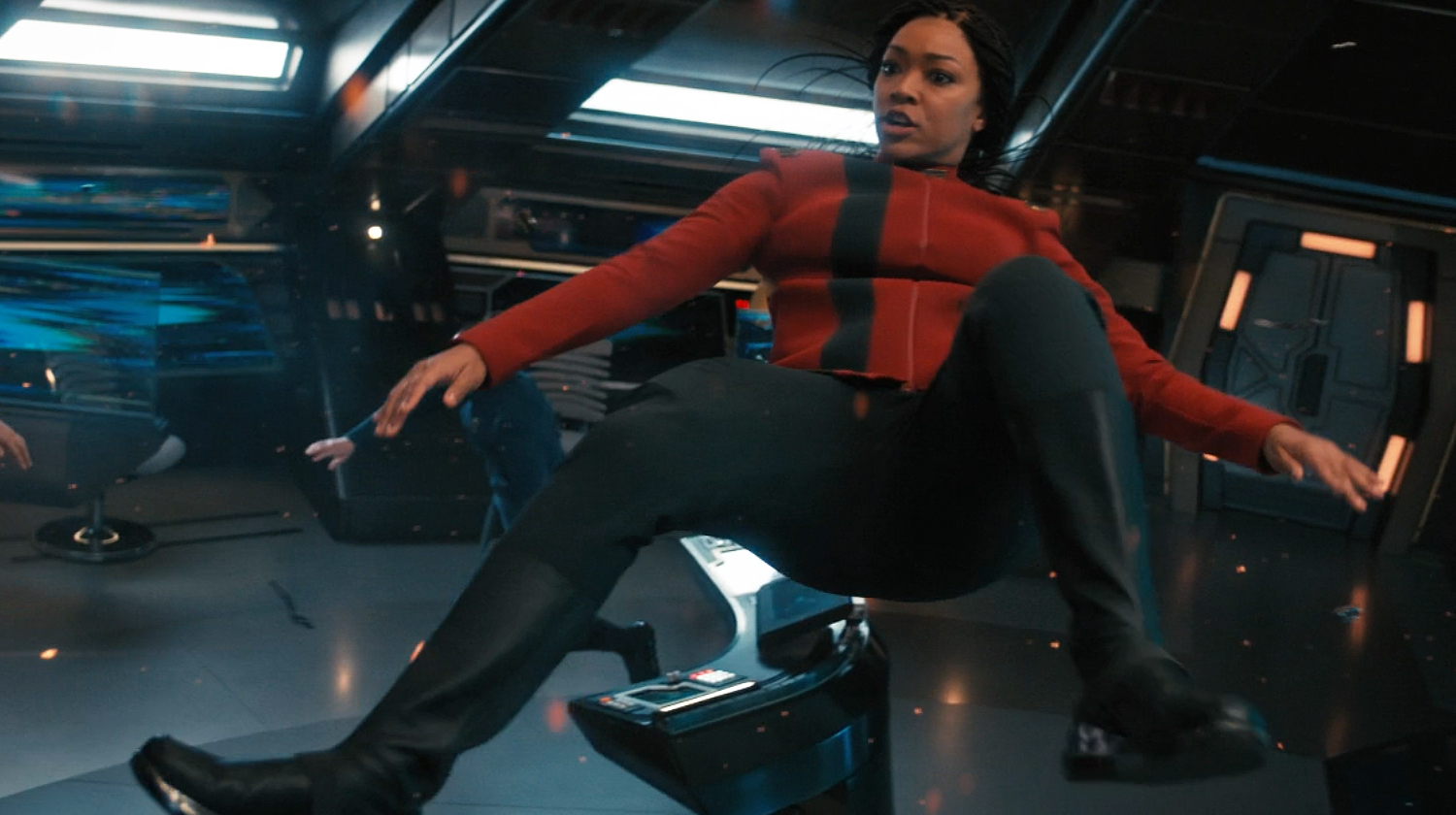
Deactivate your spoiler chip. Details about Star Trek: Discovery season 4, episode 2 are coming up.
No doubt you remember the final scene of the premiere episode of "Star Trek: Discovery" season 4 on Paramount Plus, when it all went full Alderaan.
In that episode, we saw the destruction of the planet Kwejian, Book's beloved homeworld. Once lush, fertile and full of symbiotic plant and animal life — a bit like Pandora in "Avatar" — the planet has been reduced to a burning cinder in space. His nephew Leto: toast; his brother Kyheem: char-broiled; the Sanctuary: incinerated; those trance worms Book risked his life to save: all boiled alive.
There are many reasons why such a dramatic and impactful event was not a great writing decision so early on in the season, and this week we can clearly see why. Book is naturally overwhelmed with grief to the extent that words are unable to describe how utterly sick to his stomach he must feel over the loss of so much. Add to that the inevitable survivor guilt that also overcomes him and you set up a pretty damn depressing subplot for the rest of the season. Because it wouldn't stop. Not for a long time.
Let's say for the sake of argument that a typical season of "Star Trek: Discovery" lasts about two weeks in real time. Book won't have even finished processing the loss by then … and if it's portrayed as anything different, it won't be believable. Consequently, unless the likes of Ron Moore or Naren Shankar have been secretly hired to write the rest of the season, Michelle Paradise has put the Star Trek writers in a corner in which, for the rest of the season, Book is going to be feeling pretty low to say the least.
By the way, if you're looking to get caught up on the story so far, here's how to stream Star Trek: Discovery in the U.S. and check out our streaming guide for Star Trek if you're looking to expand your Trek palate.
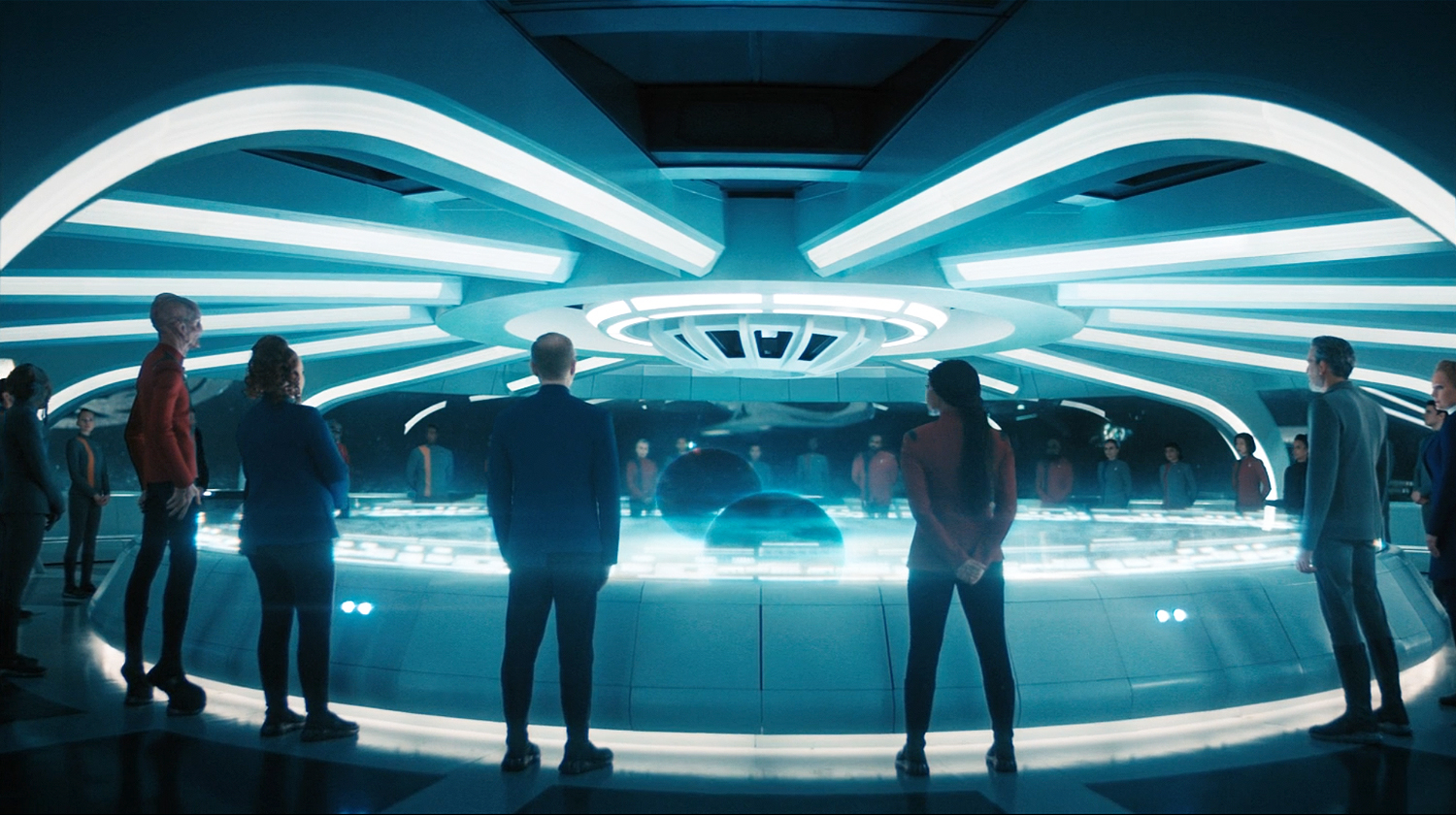
There are examples of brilliant, even beautifully handled loss in other sci-fi shows. Louanne "Kat" Katraine in the "Battlestar Galactica" episode "The Passage" (S03, E10). Dr. Carson Beckett in the "Stargate: Atlantis" episode "Sunday" (S03, E17). The Robot in the "Lost in Space" episode "Eulogy" (S01, E06). I'm not sure which one of these made me bawl my eyes out the most. The in-season elapsed time was such that the grief wasn't a plot point that would have to be incorporated for the rest of season. Moreover, these are just characters, not entire worlds.
Get the Space.com Newsletter
Breaking space news, the latest updates on rocket launches, skywatching events and more!
Add all that up and there isn't anywhere interesting for this show to go in the immediate future. And in this episode it really doesn't go anywhere at all.
We pick up more or less right after last week's disappointing opener, although we learn that a couple of days have actually passed. Book (David Ajala) has been in semi-permanent trance-like state and remains on the bridge of his ship, running the recordings of the last moments of his time on Kwejian over and over again. Burnham (Sonequa Martin-Green) enters and attempts to console him, but he's not interested in company — any sort of company — and it's unlikely that you would be, especially so soon after such a tragedy.
Related: In defense of the J.J. Abrams Star Trek movies
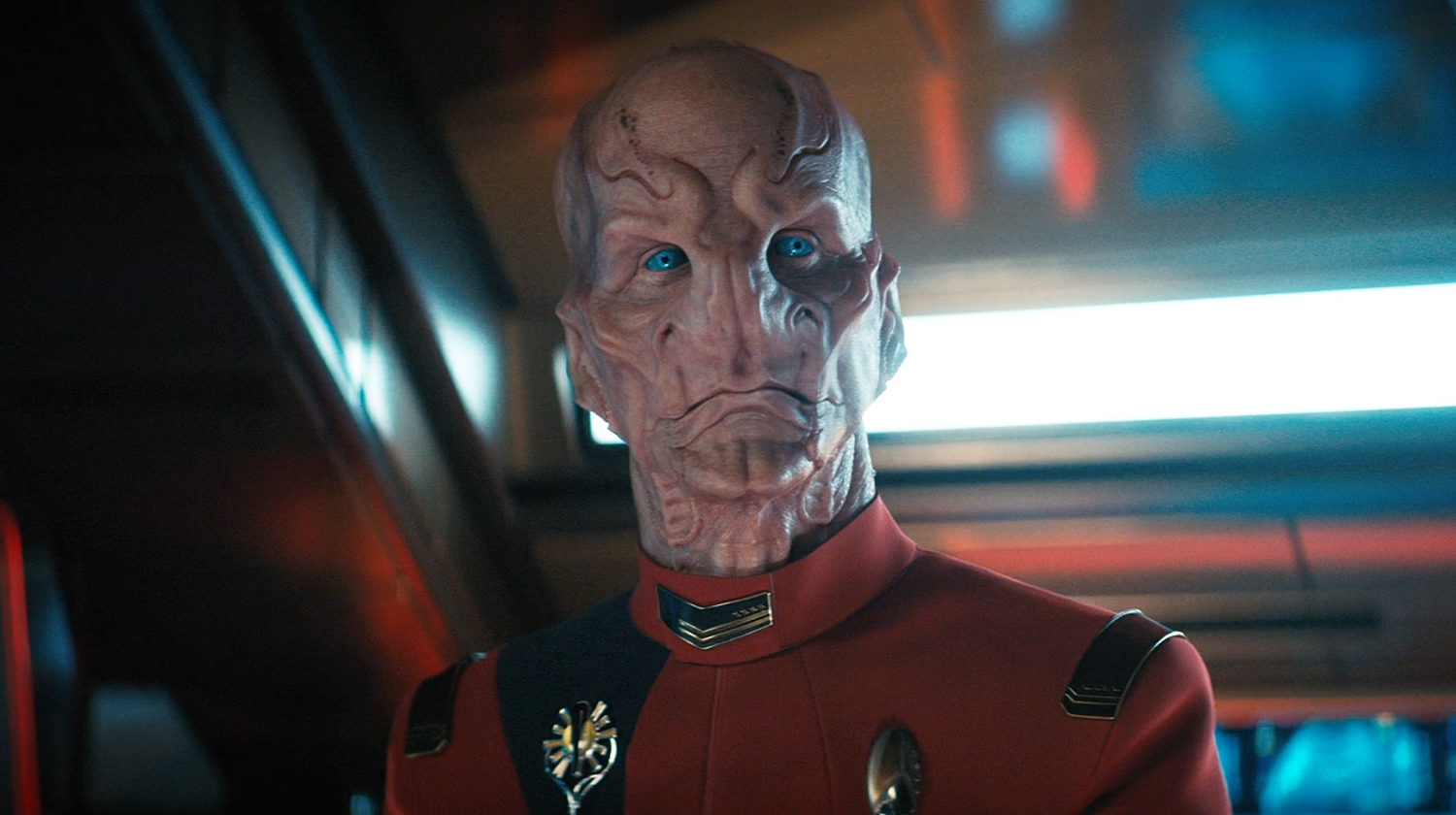
After a whole 30 seconds of talking about Book, the conversation becomes more of a catch up, Burnham's recent Deep Space Repair Beta Six experience and Saru's time spent back on Kaminar. Turns out he was offered command on the USS Sojourner, but he turned it down so that he could ask Burnham if he could be her First Officer. Naturally, Burnham accepts, thus ending Tilly's (Mary Wiseman) time in the role.
We cut to the briefing room back at Federation HQ. It's curious that the United Federation of Planets, and thus Starfleet too, have made no attempt to relocate on Earth. Granted it's only been five months since dilithium was declared safe to use in warp cores once again, but we haven't seen or heard a whisper from Captain Ndoye (Phumzile Sitole) of the United Earth Defense Force since "Discovery" went full "Scooby-Doo" in the episode "People of Earth" last season (S03, E03). Maybe we'll see more in later episodes.
Lt. Cmdr. Paul Stamets (Anthony Rapp) explains to everyone gathered that the anomaly is 5 light-years across. (That's over three times the diameter of the solar system.) Aside from that, not much is known. The current theory is that it might be a roving binary black hole, with the two singularities merging, resulting in huge gravity waves. (Merging black holes actually release gravitational waves, ripples in spacetime, in reality.) The only way, Burnham explains, to learn more and be able to predict its path, is to get out there, get up close to this thing and study it.
Related: Star Trek movies in chronological order
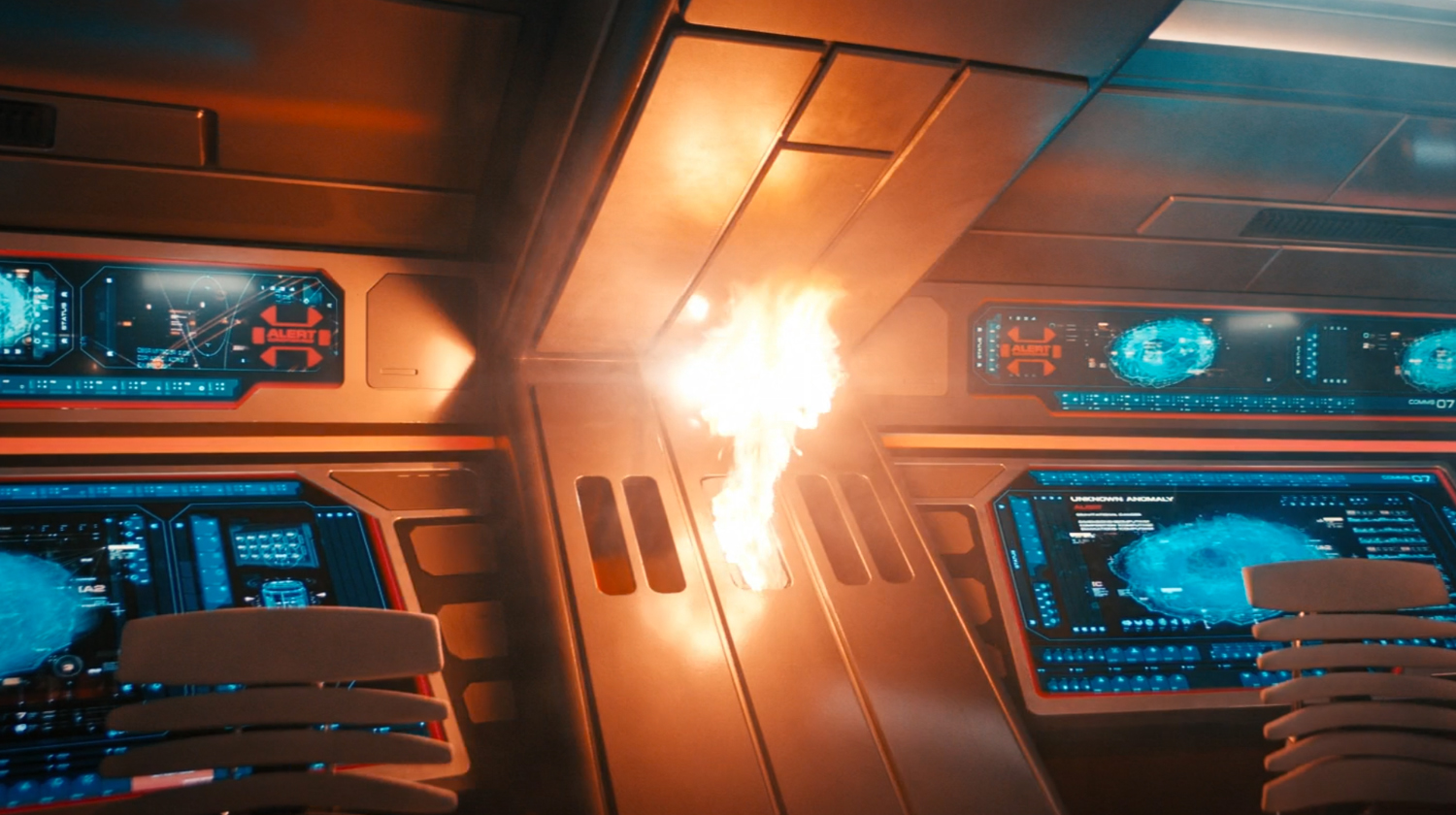
The Starfleet President, Laira Rillak (Chelah Horsdal), gives a stirring speech about how all worlds, Federation and non-Federation alike, must unite. And throughout the briefing, for the most part, tension is effectively built up as we begin to understand the gravity [ahem] of the situation. In all fairness, this episode is better the second time you watch it. Snacking down on a particularly potent edible helps too. However, the thought lingers: was it really necessary to destroy Kwejian so soon to prove the threat was serious? Book is now a primary character on the show and his homeworld is far from the planetary equivalent of a red shirt.
Tilly and Saru have a little catch up as they walk through the corridors of Discovery and she asks if he got taller. In her defense, we were all thinking the same thing. It's a nice scene and it reaffirms that everything is hunky-dory with the Kelpien taking over as first office role, not that we expected anything different.
Burnham gives a motivational speech to the crew over the com, the Discovery goes to black alert, makes that Curly-from-"The-Three-Stooges" sound effect and spore jumps to the edge of the anomaly. Once there, the sheer size of the thing on the viewscreen draws gasps from the bridge crew. Roll opening credits. A cursory analysis by both Tilly and Stamets indicate that this is a unique, theoretically impossible phenomenon and the only way to collect any useful data is to fly a ship into the accretion cloud caused by the anomaly.
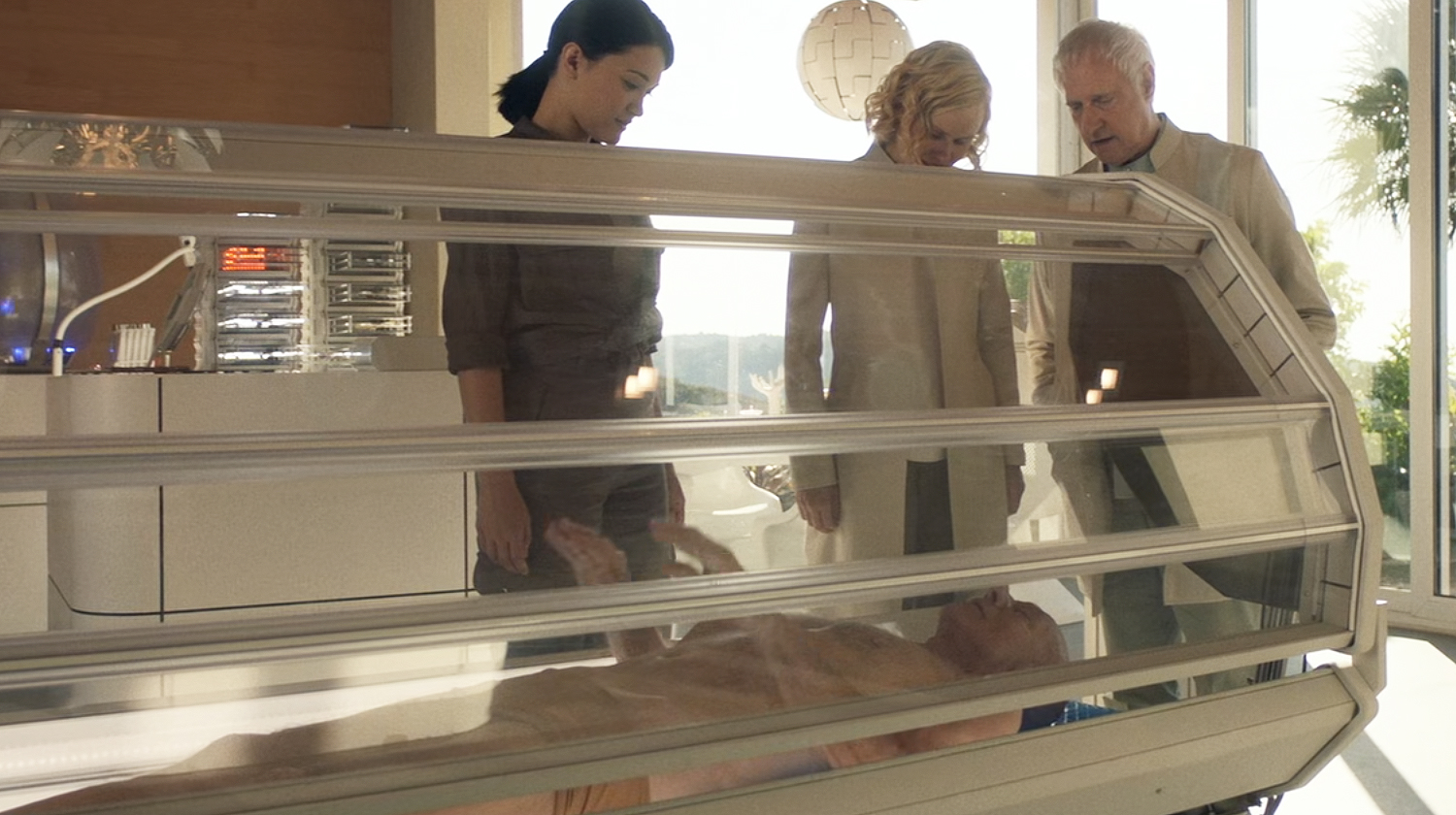
It seems like any hostility towards Burnham from Stamets following his out-of-character panic attack in the Season 3 finale and subsequent Vulcan neck pinch and ejection in an emergency escape field, is water under the bridge. A probe is too small to send in and so Book volunteers his ship. Naturally, Burnham has her reservations and quite rightly so. If there were in any way written realistically, after two days Book would still be at the not eating, not sleeping, not talking, sitting in a fetal position in the dark, gently rocking back and forth stage, with a thousand-yard stare and feeling like every day was as long as the age of the Earth.
But it's not written realistically. That said, full credit must go to the actors — and in particular David Ajala — because they do an outstanding job of almost-fooling us into thinking that this would happen. Accompanying Book will be Stamets, whose task it is to scan the anomaly and gather as much data as he can.
We cut to the only real secondary storyline in this episode, where we see Gray Tal (Ian Alexander) checking out what looks like a hardlight hologram body, but subsequent conversation hints more toward it being an inspection-only representation of what will finally be a synth body. It marks the next small step in bringing them out, past the traditional Trill form and into a normal existence. This scene also gave the producers a chance to claw their way out of the corner they put themselves into at the end of the first season of "Picard." You may recall Picard's consciousness was transplanted into a golem, making the 94-year old super-strong, super-fit super-fast and all the rest.
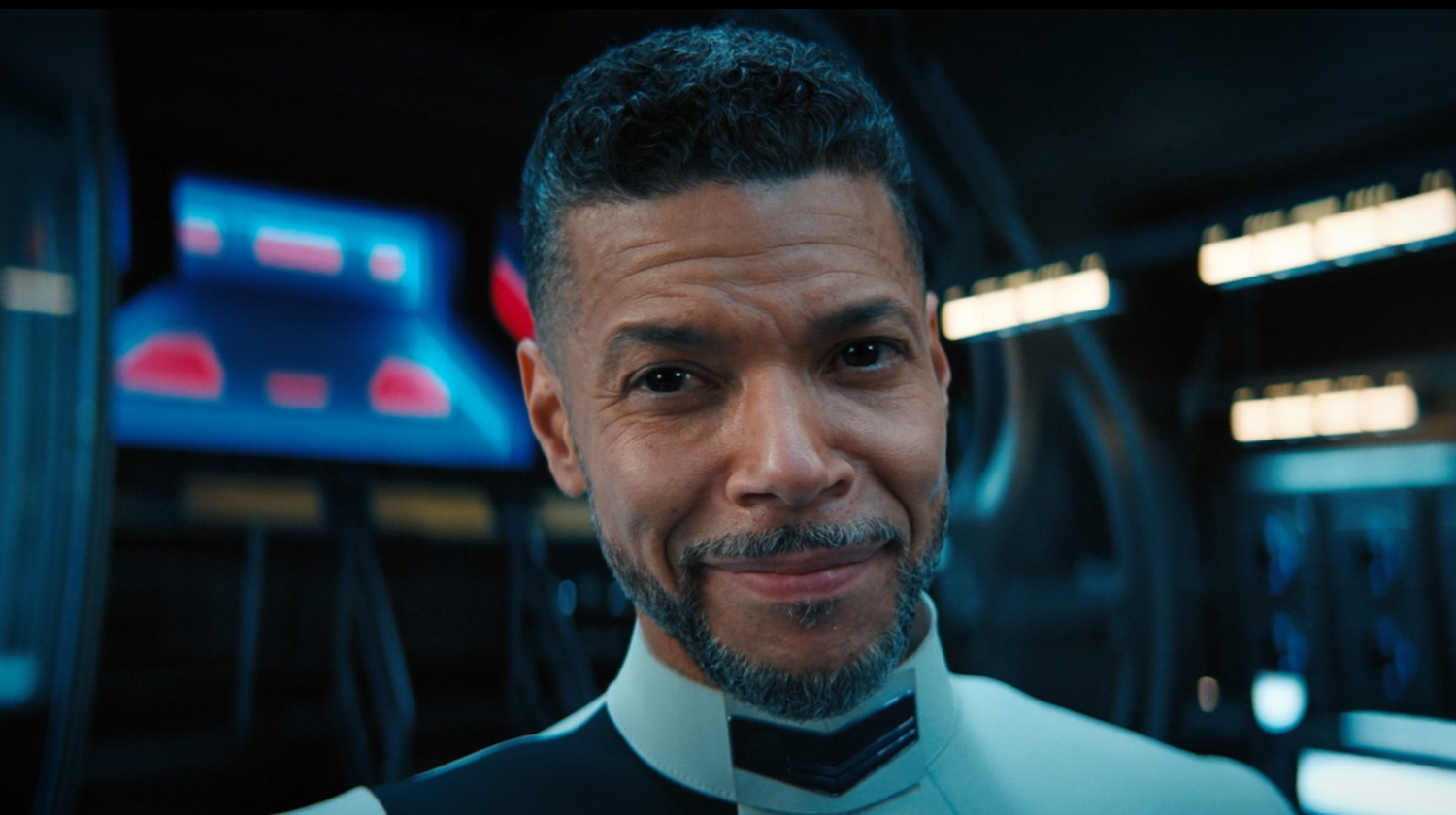
But, rather than allow him all the benefits of an artificial body made of the most robust elements known to mankind, no, they incorporated all his frailties to make the body feel more natural. Who chooses to continue to suffer from arthritis or cataracts or any effects of old age? "I knew you wouldn't want to adjust to something new, not after 94 years in the same body," Soong says, explaining away that rather huge plot issue.
Related: Watch the first full trailer for 'Star Trek: Picard' Season 2
So, back on Discovery, Dr. Hugh Culber (Wilson Cruz) remarks, "The artist did a beautiful job with the body. They used the Soong method, named after the 24th century cyberneticist who developed it."
"Maybe I should get a synth body when I die too," Adira (Blu del Barrio) jokes. "I could live forever."
"Not likely," Culber replies. "But the process was attempted a number of times after Dr. Soong first used it on…um, a Starfleet admiral…Picard was his name, but the success rate was so low that eventually people just stopped trying."
Thus providing a window of convenience to explain away the future frailty of Jean-Luc in "Picard" Season 2. Makes you wonder why Gray is going for this option though after being told that, perhaps little option is better than no option.
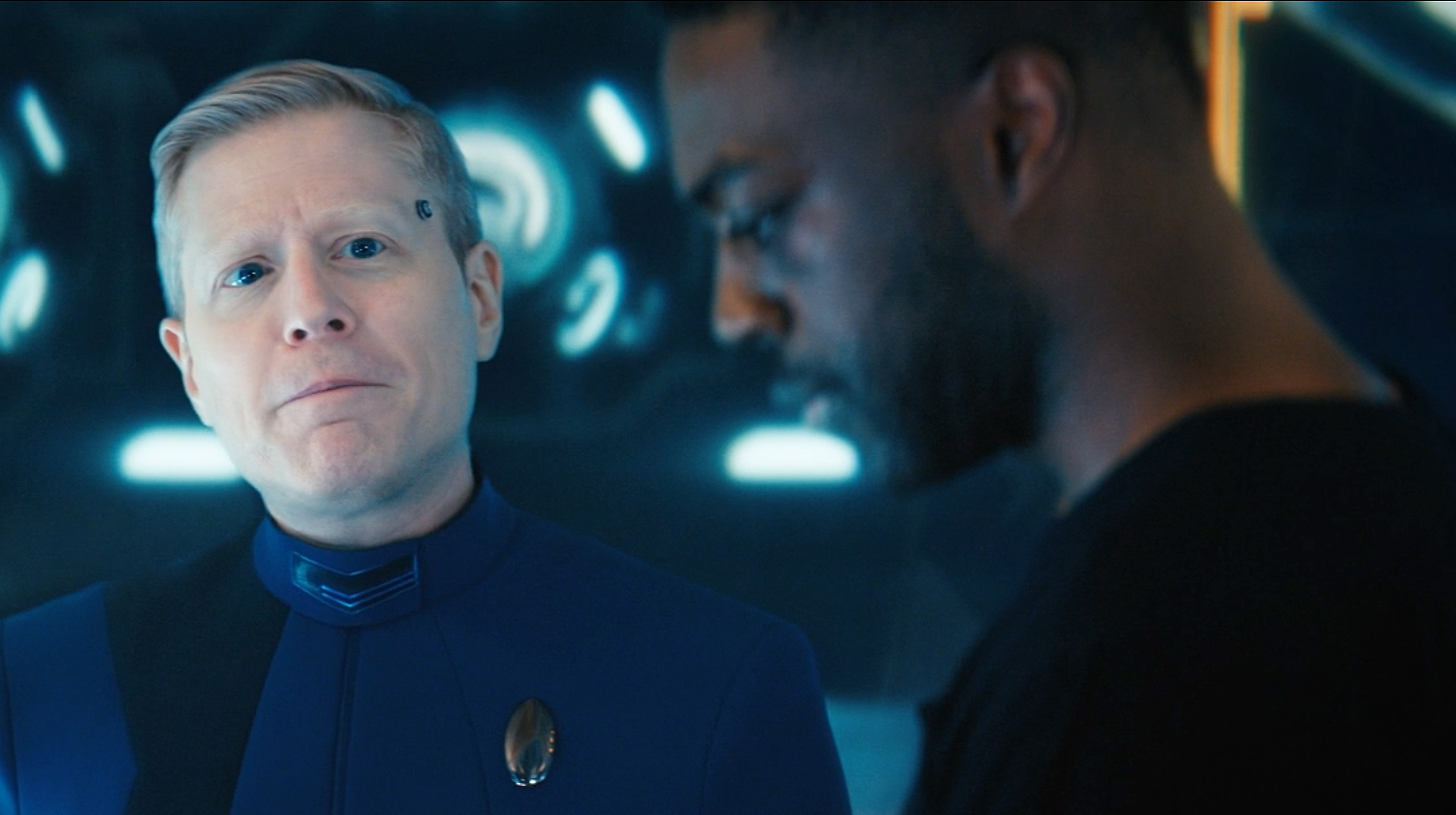
Burnham consults with Saru, who provides his own unique blend of platitudes and profound wisdom in equal measure, that one way or another always seems to be effective. There's a name drop for Zora, the ship's computer, which raises the questions, why haven't they cross-referenced the sphere data about the gravitational anomaly? It hasn't been mentioned at this point.
A harebrained plan is hatched whereby a holo of Stamets will accompany Book and his ship will be tethered with a programmable matter umbilical to Discovery to provide a stable communications channel and the ability to pull the ship out if need be. This set piece takes up the entire third act and for the most part it's pretty good. The highlight is undoubtedly the interaction between Stamets and Book and both Anthony Rapp and David Ajala do a fine job making their chemistry appear believable.
Book's ship is required to go further into the anomaly and must detach from the tether, despite Burnham's objections. Meanwhile, the Discovery itself is encountering pockets of gravitational distortion that cause temporary periods of weightlessness for the whole crew. It's effective and looks like it was a lot of fun to film. Neither ship can take much more of this punishment and time is of the essence. Book's navigation controls are knocked out and his mind begins to stray from the mission. Stamets has done a sterling job up to this point to provide support, but now it's up to Burnham.
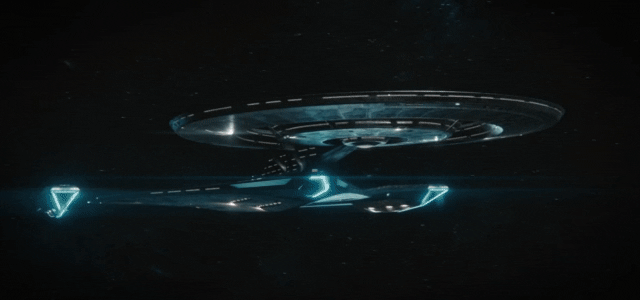
In order to get Book's ship out of the anomaly and thus out of danger, he must surf the gravitational waves out of the accretion cloud. She opens a private channel on the bridge and does her own Lindsey Brigman routine a lá "The Abyss." Book misses the first wave and only has enough power for one more attempt. It's predictable, but well put together.
Finally, once the drama is over and everything has calmed down a bit, everyone starts reflecting on their own experience of loss, which brings a bit of a depressing note to the episode. Book opens up a little to Burnham and it's a convincing portrayal of deeply personal loss. The only real way to make this particular sub-story arc believable is if a few weeks now pass in in-episode time, between this installment and next week's, but that's probably unlikely to happen.
Finally, the cliffhanger at the end of this episode is that after all their efforts, the collected data shows that the path of the anomaly is utterly random and as such, utterly impossible to predict its trajectory and which planets will be affected. A somewhat scaled back episode ending compared to last week.
Even though nothing significant really happens and the plot has holes in it the size of Lake Yuron, the dialogue and character development carry this episode. It's hard to guess where this fourth season will take the show; so far the show's antagonist is an astrophysical abnormality measuring more than 29 trillion miles across. Inevitably, an adversary or opponent of sorts will emerge, much like Osyraa did last season, but it's difficult to see where at this point. Is this gravitational anomaly going to be somehow linked to the "lightning storm in space" phenomena used by both Ambassador Spock and the Romulan warlord Nero in the first of the terrible trilogy of JJ Abrams' "Star Trek" movies? We've seen how much "Star Trek" showrunner Alex Kurtzman likes to have everything connected, George Lucas style.
Execute trans-warp drive ✓
- Good dialogue and great acting make this episode not terrible
- USS Sojourner is an amazing starship name with an amazing history
- Another reference to Zora, but her potential is far from being fully utilized
- Stamets is great when he has good scenes with well-written dialogue
- Grudge can't smell holos, so they freak her out awwww
Thrusters at station keeping ✗
- Book's grief would very much still consume him after just two days
- Another week, another clue in the 'Anomaly of the Season' story arc
- So Many Flamebursts
- The Stamets/Burnham hostility thing has been brushed under the carpet
- That silly sound again when the Discovery uses its spore drive
Rating: 6/10
The first and second episodes of Season 4 of "Star Trek: Discovery" are available to watch now and subsequent installments will drop every Thursday on Paramount Plus in the U.S. and Canada. Last week's decision by Paramount to shoot themselves in the foot and remove "Discovery" from Netflix in all non-U.S./Canada regions unsurprisingly sparked something of an outrage, even cast members made their feelings known.
Thankfully though, it seems like the flood of frustration was brought to the attention of studio suits and now Pluto TV will drop new episodes at 9 p.m. local time on the Pluto TV Sci-Fi channel each Friday, Saturday and Sunday. This will begin with the first two episodes on Friday, Nov. 26. Moreover, countries outside of North America can now access Season 4 of "Star Trek: Discovery" on Paramount Plus also beginning Nov. 26.
Follow Scott Snowden on Twitter. Follow us on Twitter @Spacedotcom and on Facebook.
Join our Space Forums to keep talking space on the latest missions, night sky and more! And if you have a news tip, correction or comment, let us know at: community@space.com.
When Scott's application to the NASA astronaut training program was turned down, he was naturally upset...as any 6-year-old boy would be. He chose instead to write as much as he possibly could about science, technology and space exploration. He graduated from The University of Coventry and received his training on Fleet Street in London. He still hopes to be the first journalist in space.










